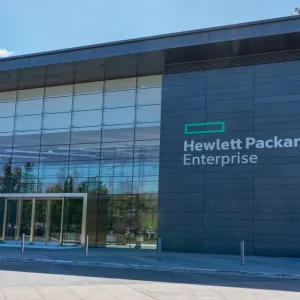
It is a very different world now than it was 15 years ago: retailers cater to online versus brick-and-mortar consumers; marketing professionals take lessons from Generation Y on social marketing; and IT has had to adjust to a mobile and social world that brings benefits and risks alike. It’s been an interesting time to lead at an IT company – navigating this rapid change, balancing the needs of IT and creating an environment where employees literally have the power of productivity at their fingertips.
Employees today are more empowered than ever, and they work on their own terms via the mobile and social worlds. It’s time to embrace that fact, because it’s not just Gen Y that’s demanding these technologies; it’s also the senior executives, middle management, the admins, the entry-level staff — even the interns! We now live in an era where employees have virtually no divide between personal and professional technology. Social experience has taught them that their voices can make a difference, making end-users more powerful than ever and putting enterprise policies at a severe disadvantage.
Let’s face it: we aren’t satisfied just working where and when we want via mobile devices. We want our individual needs met as well. An employee wants the ability to access personal networks such as LinkedIn and Facebook on company-owned devices. IT has essentially lost the ability to say "no" to the employee, and enforceable corporate access policies have gone the way of the dodo. But even (and perhaps especially) in this era of the social enterprise and the entitled user, IT still needs to protect company data, because it will be the organisation that suffers the most if data leaks.
How does a company that began before social and mobile workers were the norm adjust its business strategies to remain relevant in a socially driven world? With three key principles in mind:
Focus on What IT Needs, Not the Latest Trend
As an IT executive, it’s easy to pick up an issue of a major publication to find the latest hyped tech trend and tell your team that they need to be addressing this to meet IT demands. But the business-savvy approach is to find out what’s most essential to your specific IT needs before making any changes in policy or procedure. Some business models may not be ready for the cloud, and on-premise solutions still meet their needs best. Technology can always benefit your business, but there will also be a price associated with it. The more important question is one of timing: when does it make sense for my company to embrace a trend? The business environment will constantly change, so in order for IT to thrive it needs to adjust — just not before it’s ready.
It’s also imperative to understand that while trends are just that – trendy, they inherently have value too. A successful executive will see past the hyped-product or solution, and determine what’s driving the particular trend. The expertise that a CXO can bring is knowing what part of the trend to utilise and when to implement it across an organisation.
Hire an All-Star, Multi-Generational Staff
If you’re going to be an expert in enterprise IT, you need the best people, period. That doesn’t always mean a staff that has 20-plus years of experience. It means having a mix of qualified, talented people — some of whom can offer commentary from years of experience — as well as younger professionals with fresh perspectives who grew up on mobile and social technologies and understand the consumerisation of IT. A team representing diverse IT backgrounds will develop better products and services that meet customers’ needs and are flexible enough to meet various enterprise needs. It’s easy to say "out with the old and in with the new" in today’s IT environment, but the best IT departments value both.
Remain Committed to the Real IT Challenge
Regardless of the latest hype (BYOD, cloud, social and so on), the real IT challenge is still balancing productivity, security and compliance while leveraging current assets (as opposed to investing in all new ones). This will always be an IT department’s goal, and the role of vendors is to meet this need while evolving with the latest technologies and trends. This can be costly, unless solutions are built to be scalable and help IT avoid investing in new policies and platforms each time a new technology disrupts business.
It’s not just about hardware and software, however. There’s a need to invest in policies that are pertinent to the changing IT environment as well. Security policies regarding data need to apply as much to desktop users as they do to mobile employees, preventing the need for policy overhauls each time a new device or social platform hits the market. Above all, policies need to be implemented in a manner that doesn’t interrupt employee productivity.
Mobile, social and cloud technologies have forced IT departments to adapt to the era of the entitled, and this certainly creates complications. Successful IT teams need to navigate through new technologies without threatening security or limiting the productivity of the workforce. It’s critical that technology does not dictate policy, but rather that organisations implement and enforce policies that are flexible enough for today’s rapidly changing technology environment. Do you feel it is critical to embrace the on-demand employee? Have your company’s technology policies adapted to meet mobile and social needs? If not, what does your future look like?
Bob Flynn, president and general manager of Novell






